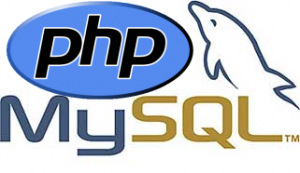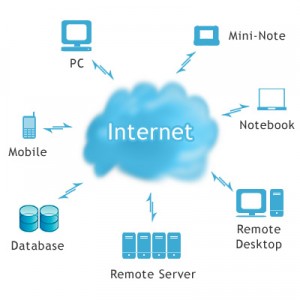by admin | Apr 29, 2010 | Random Postings

Is Flash Going To Survive?
Written By Gerald Bauer, owner and founder
There’s a tremendous amount of debate happening in the tech world over Adobe Flash, its role in website design, and its future as a leading technology.
Adobe Flash was a great way to bring sexiness and interactivity to the web. Animations, cross-fades, “motion tweens” and a bit of music brought a new level of entertainment to the web – and even brought on its own industry of “Flash Banner Ads” that accompanied thousands of websites across the globe.
So where is Flash today? From our perspective at JB Systems, Flash has a very limited role for the web. Current industry analysts and trade journals we subscribe to are telling us that the in the next decade, more mobile devices (such as iPhones, Droids, Blackberries, iPads, NetBooks, etc) will be on the web than actual personal computers. Apple has taken a progressive stance against Flash, and does not support it in their mobile devices (iPads, iPhones, iPod Touch).
Now, we don’t necessarily take every decision “Apple” makes as true testament to our calling, however it’s a pretty gutsy move to make. But taking the time to look over WHY Apple has made that decision brings some interesting points to mind that most companies should consider. I’ve summarized some important notes below:
Performance Issues and Battery Life
Using the new HTML5 Standards, H.264 encoded videos play faster and consume 50% LESS BATTERY than viewing a video using the standard Flash Video Player. This has to do with technicalities in the encoding / decoding process of the video, but the simple fact is that Flash requires more processing power to decode videos and therefore more juice (battery power) to do so.
Reliability and Security
According to Apple, Symantec recently announced that Flash had one of the worst security records in 2009. Instead of progressing, Flash’s security models and cross-domain models make it more cumbersome and difficult to handle security.
Mobility
To quote a recent documented written by Steve Jobs, “…Flash has not performed well on mobile devices. We have routinely asked Adobe to show us Flash performing well on a mobile device, any mobile device, for a few years now. We have never seen it.” As more and more users begin to their daily website surfing on mobile devices, any Flash-based content you have (all of which no doubt contain important messages about your business) will not be seen, seen well, or even supported.
Touch
It comes as no surprise that Apple is leading with the way with touch, and Multi-Touch® technology. Device makers such as Palm, Motorola, and Google have followed suit. Millions of Flash applications rely on Mouse-based actions, such as “Roll Overs” and those actions aren’t supported on these new devices. What does this mean? The Flash app, or banner, needs to be re-written to accommodate. Well, if it needs to be re-written, why not use new technologies such as Javascript and HTML5?
So, where does JB Systems stand?
JB Systems is taking the stance of using Flash, in limited fashion, for our websites. We have recently seen NEWLY developed website using complete Flash-based headers – including the website’s navigation, thus rendering the site useless for a good chunk of mobile phones. More advanced technologies, such as jQuery and other Javascript libraries offer animation and functionality that mimic (or even perform better) than Flash. As a new standard, beginning in June of 2010, all videos supported by JB Systems will be offered in two formats, HTML5 using the H.264 encoding or by embedding a Flash player. We will, however, wait until the majority of web browsers (eh hem, eh hem Microsoft … ) adopt HTML5 and streamline it as only Google’s Chrome and Mozilla’s Firefox have adopted it.
Steve Jobs’ article can be read HERE.
“Flash was created during the PC era – for PCs and mice. Flash is a successful business for Adobe, and we can understand why they want to push it beyond PCs. But the mobile era is about low power devices, touch interfaces and open web standards – all areas where Flash falls short.” – Steve Jobs.
Until next time … thanks for reading! Post any comments below – we want to hear from you!!
by admin | Mar 19, 2010 | Random Postings

Gerald Bauer (JB Systems) and James Chumas (The Chumas Agency)
Written by Gerald Bauer, owner and founder
Well everyone, 2010 marked the first year of JB Systems’ support of children’s cancer research through St. Baldricks, a national organization that promotes “shaving the way” to fighting kids cancer. It also marks the first time I have been seen without hair!
Giving back is something JB Systems takes seriously, and helping out with children’s cancer is a cause we feel is important. Feel free to visit http://www.stbaldricks.org/ for more information about the organization, their cause, and how to get involved.
Thousands of kids per year are diagnosed with cancer, and all have to learn to put their self-consciousness aside and deal with hair loss. So, to pay them tribute, so did I. And in true JB-fashion, lets throw conformity out the window, let vanity take its course elsewhere, and lets make a difference in this world. Let’s set the new standard!

Gerald Bauer (JB Systems) and Aaron Brunette (Coldwell Banker)
In the past, JB Systems has contributed to the Susan G Komen Breast Cancer Foundation, Big Brothers Big Sisters, Helping American Vietnam Veterans, as well as Eau Claire’s Feed My People Food Bank and Eau Claire’s Hope Gospel Mission.
Giving back to the community is a huge factor of our business model, be it monetary donations or time given to help out with projects, or even cooking for the needy. JB Systems plans on continuing our commitment to these organizations in the future – and we look forward to meeting you there.
by admin | Mar 12, 2010 | Technical Support
- Choose Settings.
- Scroll down to Mail,Contacts,Calendars.
- Choose Add Account…
- Select Other.
- Then choose Add Mail Account.
- Fill in your Name, E-Mail, Password, and Description. (Description is not required).
- Press Save.
Now we must enter our server information.
- Make sure you choose ‘POP’ at the top of the form. If ‘IMAP’ is selected your connection will not go through.
- The Name, Address, and Description fields should be populated already.
- Scroll down to the Incoming Mail Server section.
- For Host Name, enter in email.example.com. Where example.com would be replaced with your web sites address.
- Username is your e-mail address.
- Enter in your password and then scroll down to where you see Outgoing Mail Server
- The Host Name is the same as the Incoming Mail Server, email.example.com.
- You do not need to enter fill out the User Name & Password fields for the Outgoing Mail Server.
- Now Press Save.
You will see a message saying ‘Secure Connection Failed’, press Continue, we will take care of this once everything is saved.
- Now choose your new Account and scroll down to where you see ‘Advanced’ and select this option.
- You now need to turn ‘Use SSL’ to be off.
That’s it, you can now receive your e-mails directly on your iPhone. Enjoy!
by admin | Feb 19, 2010 | Random Postings
Whether you’re transferring your site to a new developer or building a new site from scratch, there are a few key things you need to ask before you make your decision. Regardless of who you choose, these are some things you should know to help you make the best decision.
Ask about contracts
I know that some developers require long contracts that you’re locked into – some go as long as three years. With technology and business moving as fast as it does, things are bound to change in much less than three years. Just make sure you read all of the fine print and know exactly what commitment you’re agreeing to before you sign. If you’re not comfortable with it, ask them to change it or remove it. Their willingness to work with you on that will also be a good indicator of how well they’ll work with you on future requests as well.
Ask about ownership
Your website will be a living, breathing part of your organization and you’ll want to have a great relationship with your web development team. But what if you choose a web provider and things don’t go so great? If you were to ever move the site for whatever reason, you need to be able to own your site – the content, photos, database tools, admin tools – all of it. Otherwise, it will be completely static and unusable when you try to move it somewhere else. The chances that you would have to move are small, but you just never know. Do you want to take that kind of a risk?
Ask about maintenance
Depending on what changes you foresee to your site as it grows, some developers will have a minimum hourly charge for any updates that they make to your site and it can be hefty. If they charge you one hour every time you request a change (that in actuality only takes them 10 minutes), your bill is going to add up quickly. Plus, do you really want to have to worry about every little change and how much it costs? Check to see if your developer offers another option for website maintenance.
Ask about marketing
Once you have the website built, you’re done, right? Um…no. If no one can find your site or if no one knows about it, what good is it? Find out if your web provider will help you market the site so that you can get the most bang for your buck.
What’s the Fifth?
In your experience, what other things should people know before they choose a web provider? Let us know! Comment below…
by admin | Feb 13, 2010 | Random Postings

Written by: Gerald Bauer, Owner of JB Systems
I’d like to spend a moment and bring to attention some interesting points about the technology and more importantly, the programming language, that powers our applications and websites coming from JB Systems.
The battle of web-languages has been fought for years, and several languages still exist today. At our beginning, an important decision had to be made. We knew at the get-go our websites needed interaction – something that set them apart from “table-based”, static websites that were at the time very common. Our choices for a language included Java Server Pages (JSP), Active Server Pages (ASP), Coldfusion (a Macromedia/Adobe language) and Hypertext Pre-Processor (PHP). The acronyms are a bit much – but stick with me.
Why We Went With PHP…
Well, to summarize briefly and to provide you with some valid points – here’s our case for PHP:
- PHP is an actual programming language. For developers comfortable using languages like Javascript, Python, Java, etc – picking up PHP is typically quite easy.What does this mean for you? Easy – more programmers can be readily found to develop PHP. Your PHP-driven website has a better chance of being supported by other developers (if need be) – especially over languages such as Coldfusion and JSP, as these languages are typically more specialized. Laymen Terms: Cheaper to support
- PHP is Efficient. The C library that runs PHP requires far less overhead than running TomCat (JSP engine built by Java) or the Coldfusion Engine (Build by Adobe). ASP runs by default on Microsoft’s IIS server (however, do we really want to discuss the viability or security if IIS?).
What does this mean for you? Speedier websites and delivery of pages. Since our server doesn’t have all of this bulky 3rd party software consuming processor usage and memory – they can deliver pages faster and more efficiently than others.
Laymen Terms: It’s more efficient, our servers can run faster than others.
- PHP is more popular? I know that’s a bold statement – but don’t believe me?
I encourage you to review TIOBE Programming Community Index. You’ll find PHP is the 3rd most commonly used programming language worldwide. Languages such as Coldfusion, ASP, Ajax, Ruby on Rails and more were excluded – because, according to the website, they’re not considered full blown languages. This may come as a shock to all of the Microsoft proponents of the world – especially my colleagues at CVTC – but sorry. (Is this where I get to point out Apache web servers outnumber Microsoft ones by over 4-1! No really… See Here.
In case you’d like more supporting documentation, the following site (HERE) displays statistics on the top used frameworks. Here’s the scoop:
PHP – 29.58%
ASP – 23.98% (Sorry guys)
J2EE (JSP) – 7.66%
Coldfusion – 1.92% (eek)
Laymen Terms: Go with what’s supported the most, especially with technology that changes as often with the web. Again, cheaper to support.
- Cost To Developer. PHP is Free. Did you know a Coldfusion license can cost as much as $7,500? Ouch. And what about their upgrades – from year-to-year? PHP, ASP, and JSP are continuously supported and upgraded for free. Throw in the industry-standard MySQL database that powers our “back-end” data storage needs and we can write applications that other developers would need to spend $10,000 on just to get started.
Laymen Terms: We don’t have to charge you as much.
Well, that concludes my summary of why JB Systems (and ~ 30% of other developers in the world) choose PHP as the de-facto technology of choice to power our websites. Hopefully you’ve found this article helpful. Thanks for reading!
by admin | Feb 11, 2010 | Random Postings, Search Engine Optimization
Written by: Erin Trowbridge, Director of Marketing at JB Systems, LLC
Recently, the Chippewa Valley Business Report wrote about something near and dear to our hearts: the online marketing world. I wanted to take just a minute to focus on a couple of ideas they mentioned, and explain why they’re important. And of course, we can help you out with any of this on your site.
Landing Pages and Microsites
Landing pages allow you to easily track where your website traffic is coming from so that you know what marketing efforts are working…and which are not. Think of your marketing activities – whether it’s advertising, trade shows, direct mail, or another offline channel. How do you know if they were effective? Landing pages are specifically targeted to exactly what the ad or direct mail piece is talking about so that the customer isn’t at all confused. This makes it more likely that they will keep clicking through and eventually buy or contact you.
Microsites are exactly what they sound like – small sites within or added to your site that are specifically targeted to one product, program, service, etc. This is what Net Health Shops does for their various product lines. They allow you to provide a few pages of ultra-specific content to your customers who you don’t want distracted by other things on your website.
“No unsupervised thinking” - MarketingExperiments.com
Both landing pages and microsites are extremely effective for getting the customers to do what you want them to do on your website. Studies have shown that by being blatantly obvious about what you want customers to do and how to do it will increase your conversion rates in a huge way. And isn’t that what we all want – for our website visitors to convert into qualified leads, subscribers, customers, or donors?
Search Engine Optimization, Organic Search, and Paid Search
Although this may just sound like a collection of buzz words and trendy online jibberish, these are things that your company really should be considering in your marketing plans for 2010. If built and marketed the right way, your website can actually generate revenue or leads that turn into revenue, instead of just being another expense.
Search engine optimization (SEO) is a process by which you make small, but significant changes to the content of your website (seen and unseen by visitors) in order to be listed higher on the search results page of Google, Yahoo, Bing, or other search engines. Why, you might ask, do I need to be ranked high in search engines?
Reason #1: Location, Location, Location. If no one could find your business, how long do you think you’d last? Same goes for your website.
Reason #2: We are spoiled. Well, maybe not spoiled, but busy – and because of that, we expect that everything should be right there, right now. We expect that the best results will be at the top. Would you go to page two or three when you can get the best on page one?
Reason #3: We don’t listen. It’s not that we don’t listen to things that we care about, but your advertising is not one of those things. We’ve been bombarded by advertising most of our lives and it has gotten to a point where most people just tune it out. Although using a variety of advertising channels is a good move for most companies, they won’t always remember your web address in that ad. If the ad was effective, they will, however, remember the ad’s message and maybe your company name or what kind of product/service was being advertised. That’s what they’ll put into the search engine. If you’re near the top and they heard/saw your ad, it’s pretty likely that they’ll click through to your site.
We have implemented our SEO+ program for several of our clients and they’ve seen some great results. Google uses about 100 different variables to determine your placement, so it’s not something that happens overnight and it’s not something that most small business owners have time for. SEO is an ongoing process; our program is 12 months and we meet with you every other month to talk about your rankings. We also review your analytics with you so that you really understand what’s happening on your site.
“Ok…I get the organic search stuff, but what about paid search?”
Paid search (also called CPC, PPC or pay-per-click advertising) means that you’re actually buying advertising on the search results page. Those ads are triggered by whatever keyword is typed in. You bid on keywords that are relevant to whatever you’re advertising, and the best placement goes to the highest bidder. When someone clicks on your ad, you get charged whatever your bid was to be to win that placement. The more relevant the target page is to the keyword typed in, the better placement your ad will have. I will caution you though: paid search is not for the faint of heart. It requires a lot of monitoring, bid modifications, and budget control. This is easily done by using the ‘daily budget’ function, but if that’s not used, you can rack up a hefty bill in no time.
There’s a lot more in-depth I could go, but for the sake of your precious time…here’s a link to tell you a little more about how our Search Engine Marketing program works.
Let us know if you have comments or questions about this kind of stuff. We’ve made these kinds of things work really well for several of our clients already and we’d love to share those successes with you. Comment on this post or send me an email!
by admin | Feb 7, 2010 | Website Launches
 Written by Gerald Bauer, Owner of JB Systems
Written by Gerald Bauer, Owner of JB Systems
JB Systems is proud to announce our newest website (and masterpiece!) for Chippewa Valley Bean, the United State’s largest kidney bean operation. Located in Menomonie, WI, the Doane family has been operating the farm since since 1858. After researching several firms, they chose JB Systems for our keen sense of website knowledge – and more thorough suggestions for their site than what other developers offered.
The website, seated comfortably at www.cvbean.com, is a great example of how we at JB Systems can combine some of the latest website technologies with dramatic imagery – thus creating a site that is not only functional, but (dare we say) gorgeous. The images, a combination of ones accumulated previously by Chippewa Valley Bean, and ones shot by JB Systems ourselves, helps bring a more intimate and “real life” view of what goes on at the farm. This, along with some easy-to-use administration tools that allows C.V. Bean to keep parts of their website updated – provides a “recipe” for one awesome website.
We want your feedback! Take a look at the site and COMMENT BELOW.
by admin | Feb 6, 2010 | The JB Labs, Website Launches
 Written by Gerald Bauer, Owner of JB Systems, LLC
Written by Gerald Bauer, Owner of JB Systems, LLC
Impact Sports, a division of Genesco (the parent company of Hat World, Lids.com, Journeys, and Dockers Footwear), chose JB Systems to implement their proprietary Artwork Management System. After upgrading their company’s internal business management and invoicing software, Impact still had a need for their art department to manage their artwork files. Sounds like a pretty straightforward task, except the anticipated number of files to store was going to range between 60,000 and 100,000 pieces – all needing to be tagged, categorized, and more. To make matters even more interesting, the “Art Manager” (as it’s been code-named), needed to integrate with the databases (MSSQL) of their new management software.
Needs Of This Solution Included:
- Ability to store, categories, and search for all pieces of customer artwork
- Create a 4-step approval process for internal controls before artwork reaches the customer for approval
- Create an interface, online, for customers to approve or decline their pieces of artwork
- Provide documentation and re-approval if artwork is declined
- Store approvals in their internal business management software for company to use
- Create the application to be scalable – and expandable based upon future needs of the company
- Much more…
JB Systems (or the Labs) implemented a proprietary solution that accomplished all tasks – and housed in a secure server environment. The new application has streamlined their artwork approval process with clients, enhanced the quality control of their artwork, provided back-end integration with their management software, and more. We’re proud of the system we’ve created and excited to work with Nike’s largest North American distributor. This is a testament to the quality of programming and project management that the JB Labs (at JB Systems) can provide – from small companies to multi-million dollar ones.
More next time – and thanks for reading!
by admin | Jan 25, 2010 | Random Postings
 Cloud computing is a term that has gained much popularity in the past year or two, and is now the driving force behind several web development and IT-based companies. Interestingly enough, we thought it would worthwhile to note that JB Systems started with this technology from our humble beginning.
Cloud computing is a term that has gained much popularity in the past year or two, and is now the driving force behind several web development and IT-based companies. Interestingly enough, we thought it would worthwhile to note that JB Systems started with this technology from our humble beginning.
In 2003, we leased our first dedicated server and began hosting our websites on a server we couldn’t physically touch. Our competitors laughed at this, scoffing at us because our servers “weren’t local” and that we couldn’t maintain our machines efficiently.
Well, the year is 2010 and most, if not all, of our competitors have moved their hosting platforms to data centers, hence using this notion of cloud computing. The irony here is what we find funny.
Trend setters… perhaps we are. More next time.
by admin | Jan 18, 2010 | Random Postings
 Written by Erin Trowbridge, Director of Marketing at JB Systems
Written by Erin Trowbridge, Director of Marketing at JB Systems
After a long wait, I’ve finally arrived at my cozy desk at JB Systems with iMac in place and ready to rock!!
For those of you who aren’t familiar, I’m the newest addition to JB Systems. Basically, this means that JB Systems’ clients can access my marketing, graphic design, and writing skills whenever, wherever…ok, almost. But the point is – I’m here as a resource for our clients so I hope that you’ll take advantage of that. My goal is to make sure that our clients’ websites do exactly what they want them to do – that includes using the coolest, newest technologies and creative marketing ideas, but also making sure that your online (and even offline) marketing is measurable, targeted, and relevant to your customers.
I would also like to say that I couldn’t be more psyched to be working with Jerry, Meghan, and the whole crew at JB Systems – talk about a powerhouse of talent! You’ll never hear “no, we can’t do that” and I think that’s a true testament to their dedication to their clients and their expertise in their fields.
Now that I’m here, feel free to contact me anytime…about marketing, how to get the best results from your website, or if you just need a break! You can reach me at erin@jbsystemsllc.com or 715-830-9375.
Hilsen, (yes, I speak a little Norwegian)
~Erin
Page 6 of 10« First
Last »








